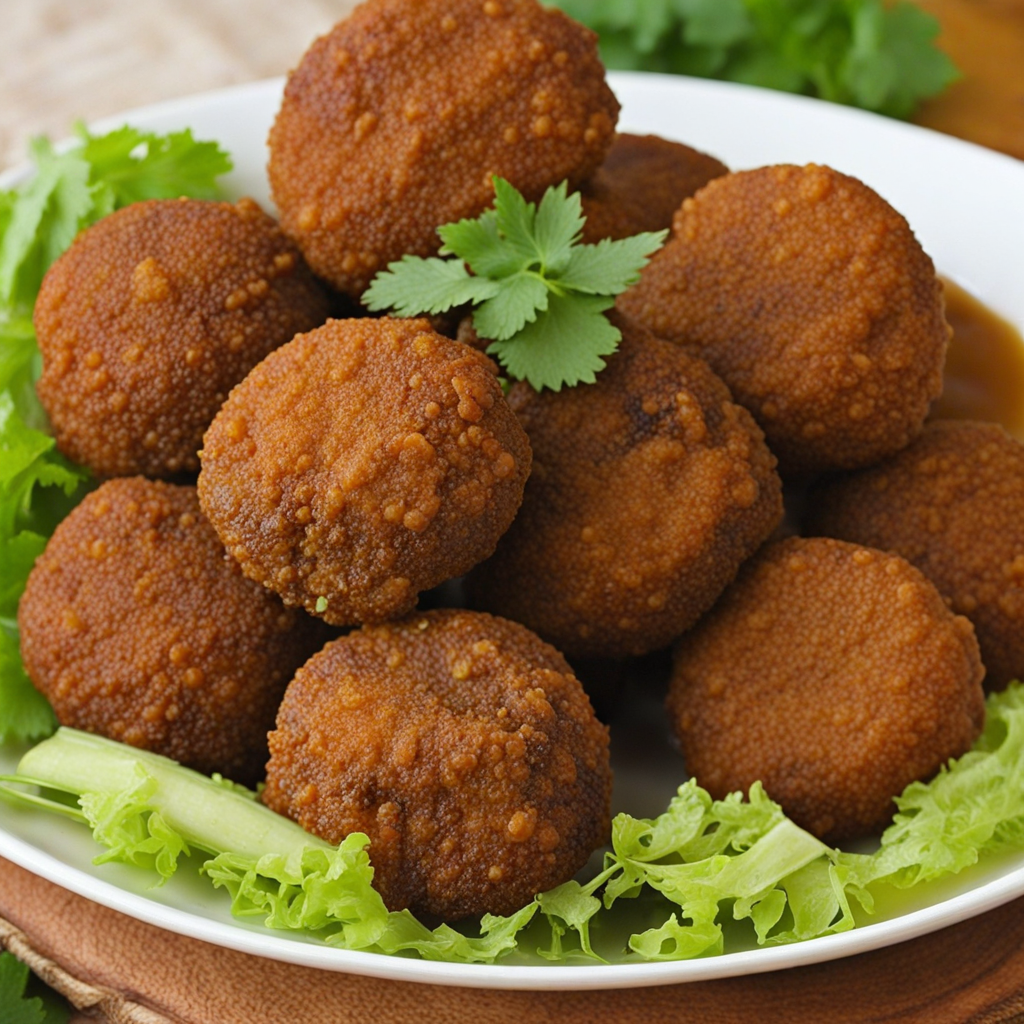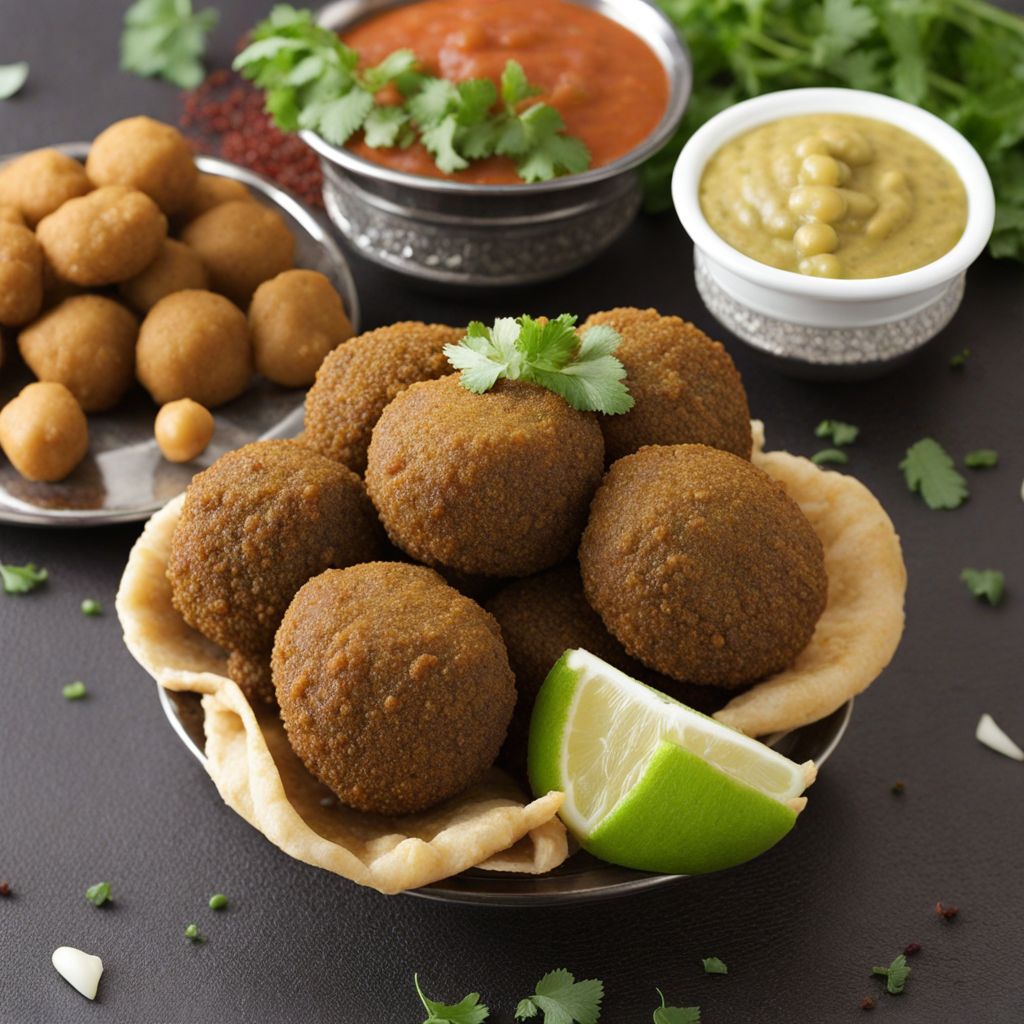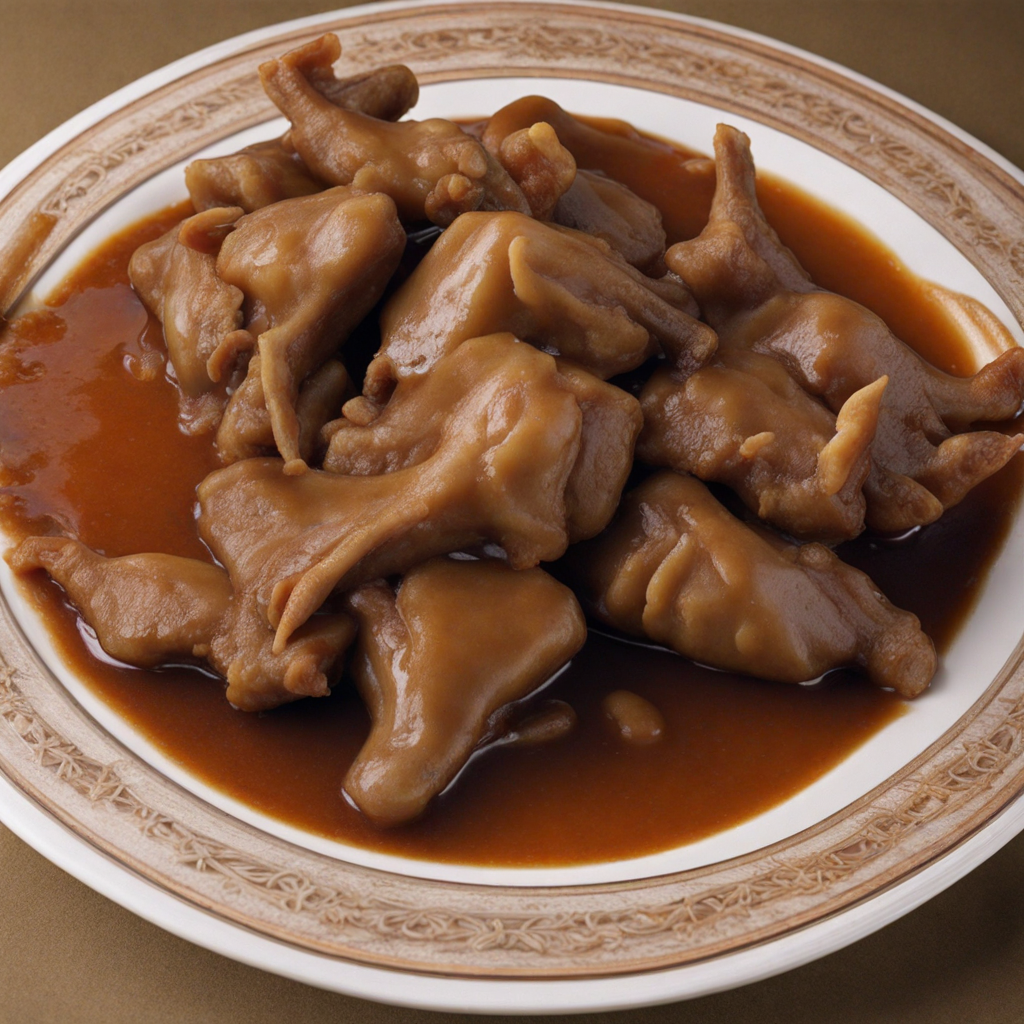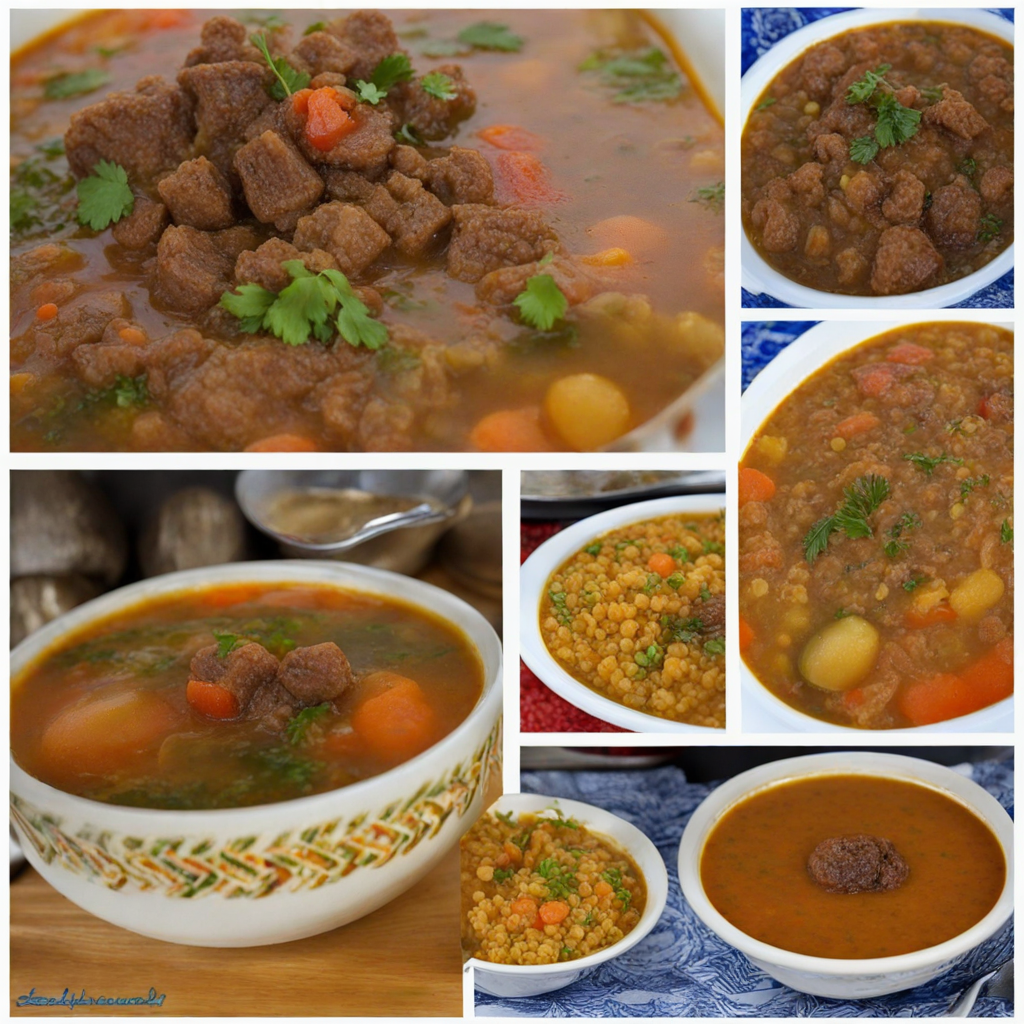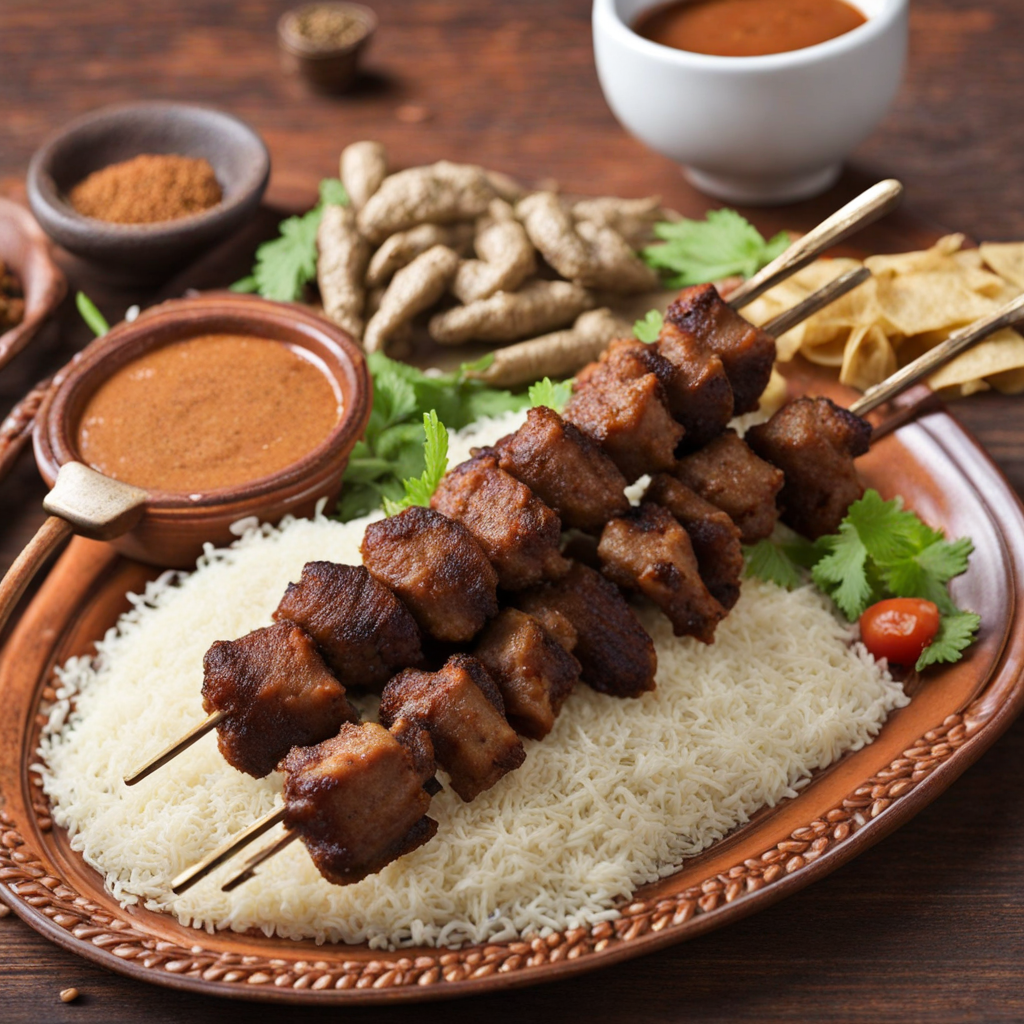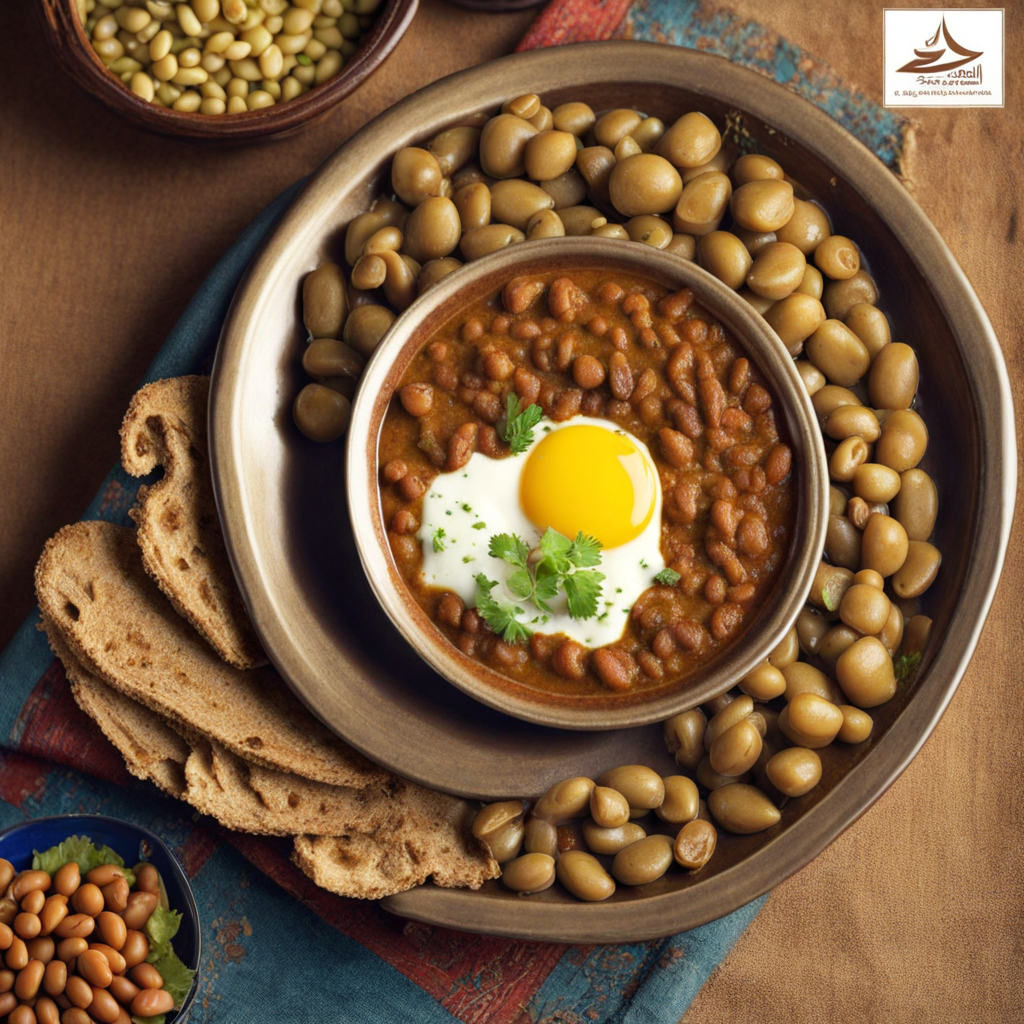Tamia
Tamia, also known as Sudanese falafel, is a delicious and unique dish that showcases the rich flavors of Sudanese cuisine. Made primarily from fava beans, this dish is a delightful twist on the traditional falafel. The fava beans are soaked, ground, and mixed with a vibrant blend of herbs and spices such as garlic, coriander, and cumin, giving Tamia its aromatic and earthy profile. The mixture is then shaped into patties or balls and deep-fried until they achieve a golden, crispy exterior, while remaining soft and flavorful on the inside. What makes Tamia particularly special is the addition of local ingredients like fresh herbs, which elevate the flavor and provide a refreshing contrast to the richness of the fried beans. Often served with a side of tangy tahini sauce or a spicy chili dip, Tamia is not only a street food favorite but also a staple in homes across Sudan. The crunchiness of the exterior combined with the tender and savory interior creates a delightful texture that is sure to please any palate. Accompanied by a variety of garnishes such as pickled vegetables, fresh salad, or flatbreads, Tamia is versatile and can be enjoyed as a snack, appetizer, or even as part of a main meal. This dish embodies the essence of Sudanese hospitality, often shared among family and friends during gatherings. Discovering Tamia is not just about tasting a new dish; it's about experiencing the warmth and richness of Sudanese culture through its food.
How It Became This Dish
The History of طعمية (Ta’amiya) in Sudan #### Origins and Etymology Ta’amiya, a beloved dish in Sudan, is a type of falafel made primarily from fava beans. The word "ta’amiya" itself is derived from the Arabic word "طعام" (ta’am), meaning food. Its roots can be traced back to the agricultural practices of ancient civilizations in the Nile Valley, where fava beans have been cultivated for thousands of years. The use of fava beans as a staple food can be seen as an early example of plant-based nutrition, with beans providing essential protein and nutrients in a region where other livestock and crops may not have been as readily available. The dish is often associated with various Middle Eastern cuisines; however, Sudan’s version of ta’amiya boasts unique characteristics that reflect the country's culture, geography, and culinary practices. The Sudanese variation is distinct from the Levantine falafel made from chickpeas, showcasing the diversity within the broader genre of fried bean balls. #### Cultural Significance Ta’amiya holds a special place in Sudanese culinary culture, transcending the boundaries of mere sustenance to become a symbol of communal gatherings, family heritage, and national identity. Traditionally enjoyed at breakfast or as a street food snack, ta’amiya is often served with a variety of accompaniments, including fresh vegetables, spicy sauces, and flatbreads like kisra or as bread rolls. This versatility allows it to fit into different meal contexts, whether eaten at home or on the go. In Sudan, food is intrinsically linked to identity and tradition. Ta’amiya is often made during special occasions, family gatherings, and celebrations, serving not only as nourishment but as a medium for social interaction. The preparation of ta’amiya can be a communal activity, with families coming together to grind the fava beans, mix in spices, and form the patties before frying them to golden perfection. This aspect of communal cooking highlights the values of hospitality and togetherness that are deeply ingrained in Sudanese culture. #### Development Over Time The evolution of ta’amiya in Sudan can be traced through various historical and socio-political changes. As the country has experienced migrations, trade, and cultural exchanges, the dish has adapted to incorporate new ingredients and techniques. In the early 20th century, as Sudan endured colonial rule and the subsequent struggle for independence, the culinary landscape began to shift. Traditional foods like ta’amiya became symbols of national pride and resilience. The dish was not only a means of sustenance but also a way to assert cultural identity in the face of foreign influences. During this period, street vendors began to emerge, selling ta’amiya in bustling markets and public spaces, making it accessible to all segments of society. The post-independence era saw a revival of interest in Sudanese cuisine, with ta’amiya at the forefront. Chefs and home cooks began experimenting with flavors and presentation, resulting in a wider variety of spices and ingredients being used. Common additions include garlic, coriander, and green chili, giving the patties a unique kick that sets them apart from other regional variations. The globalization of cuisine in the late 20th and early 21st centuries further transformed the way ta’amiya is perceived and consumed. The advent of social media and food blogs has allowed Sudanese diaspora communities to share their culinary heritage with the world, leading to a renewed appreciation for traditional dishes. As Sudanese migrants settled in different parts of the globe, ta’amiya became a way to connect with their roots, often leading to the establishment of small restaurants and food stalls that cater to both the Sudanese community and the broader public. #### Modern Interpretations In contemporary Sudan, ta’amiya continues to thrive as a beloved street food and home-cooked meal. While the traditional recipe remains popular, modern interpretations have begun to emerge. Some chefs are experimenting with fusion concepts, incorporating global flavors and techniques into the dish. For example, some variations may include toppings such as avocado, a nod to international culinary trends, or even a gourmet twist with artisanal bread. Moreover, the growing emphasis on vegetarian and plant-based diets has further propelled ta’amiya into the spotlight. As more people seek meat alternatives, this fava bean dish stands out as a nutritious and satisfying option. The health benefits of fava beans, rich in fiber, protein, and essential minerals, have made ta’amiya appealing to a wider audience, including those who may not have previously considered Sudanese cuisine. #### Conclusion Ta’amiya is more than just a dish; it encapsulates the rich tapestry of Sudanese culture, history, and identity. From its ancient origins as a staple food in the Nile Valley to its modern reinventions in a globalized world, ta’amiya reflects the adaptability and resilience of Sudanese culinary traditions. As Sudan continues to navigate its path through a rapidly changing world, ta’amiya remains a cherished reminder of home, heritage, and the power of food to bring people together. In every crispy bite, one can taste the history, the culture, and the pride of a nation that has embraced this delightful dish for generations.
You may like
Discover local flavors from Sudan


